Zoom Digital Water Cooler, Heater, and Ice Maker
If you’re looking for a device that combines cooling, heating, and ice-making in one, the Zoom Digital Water Cooler, Heater, and Ice Maker is the perfect choice for you. With this multi-functional device, you won’t need more than one appliance to get cold water in the summer, hot water in the winter, and fresh ice at any time. It’s the ideal solution for homes, offices, and commercial spaces that require a practical and efficient device.
Key Features:
- Advanced Cooling and Heating Technology: The Zoom Digital device comes with cutting-edge technology that ensures you get cold water quickly in the summer and hot water in the winter, with easy and precise temperature control.
- User-Friendly Digital Display: The digital screen makes it easy to set the temperature and switch between cooling or heating modes with just a button press. You can control the device with comfort and precision.
- Integrated Ice Maker: With the Zoom Digital device, you don’t need a separate appliance to make ice. This device produces large quantities of ice quickly and easily, making it ideal for enjoying cold drinks anytime.
- Stylish and Durable Design: The device features a modern design that fits any décor, making it a perfect addition to any space, whether at home or the office. The high-quality materials ensure a long-lasting product.
- Energy-Efficient: With its low energy consumption, the Zoom Digital device helps you save on electricity costs without compromising performance. It’s both eco-friendly and economical.
- Easy Maintenance and Cleaning: With its easy-to-maintain design, you can clean the device with ease to ensure the water remains fresh and clean. It won’t take much time or effort to keep it in great condition.
Perfect for All Uses:
Whether you’re at home and need cold or hot water throughout the day, or in the office where comfort is a priority, the Zoom Digital device is the ideal solution. With its practical design and excellent performance, it will be your perfect companion at all times.
Why Choose Zoom Digital?
The “Zoom Digital” product offers comfort and efficiency in one device. It provides all your needs for water cooling, heating, and ice-making, with ease of use and maintenance. If you’re looking for a high-performance device that combines modern technology and great results, choosing this device will be a smart decision.
FAQs
Yes, a digital ice maker can technically work without a filter, but it may not provide the best performance or water quality. Here’s how it works and what you need to consider:
How It Works Without a Filter:
- Water Supply: Ice makers require a water supply to produce ice. If the ice maker is plumbed in, it will draw water directly from your water line (if connected) or from a water reservoir if it’s a self-contained unit.
- No Filtration: Without a filter, the ice maker will use the water as-is, meaning any impurities, chemicals (like chlorine), or minerals in the water could make their way into the ice. This may affect the taste, clarity, and quality of the ice.
Potential Issues Without a Filter:
- Taste and Odor: Without a filter, you might notice that the ice has an unpleasant taste or odor due to chlorine, minerals, or other contaminants in the water.
- Cloudy Ice: Water with high mineral content can result in cloudy or imperfectly formed ice cubes. This is especially true if the water has a lot of calcium or magnesium.
- Mineral Buildup: Over time, minerals can build up inside the ice maker, leading to performance issues or clogs. This can shorten the lifespan of the machine.
- Health Considerations: While not having a filter may not immediately affect your health, consuming ice made from untreated tap water could expose you to harmful bacteria or impurities, especially if the water quality is poor.
Benefits of Using a Filter:
- Improved Taste: A filter can help remove chlorine, chloramine, and other chemicals that affect the taste of your ice.
- Clearer Ice: A filter can remove minerals that contribute to cloudy ice, giving you clearer, more visually appealing ice cubes.
- Cleaner Ice: A filter helps to reduce bacteria, sediment, and other impurities in the water, which can enhance the overall hygiene of the ice.
Conclusion:
While an ice maker can work without a filter, using a water filter will help improve the quality of the ice by removing contaminants and minerals that could affect taste, appearance, and machine performance. If your water quality is good, you might not notice a huge difference, but for better results and longevity, adding a filter is highly recommended.
A digital ice maker typically uses a combination of sensors, thermostats, and timers to determine when to start making ice. Here’s how it generally works:
1. Temperature Sensors:
- How it Works: The ice maker uses temperature sensors to monitor the temperature of the water in the ice-making tray or mold. When the temperature drops to a certain level (usually below freezing, around 32°F or 0°C), it knows that the water is cold enough to freeze and turn into ice.
- When it Triggers: Once the water in the mold reaches the freezing point, the ice maker will begin its ice-making process, usually by filling the mold with water from the reservoir.
2. Ice Level Sensors:
- How it Works: Many ice makers have a sensor that detects when the ice bin or storage area is full. When the ice bin reaches a certain level, the sensor sends a signal to the ice maker to stop making more ice.
- When it Triggers: The ice maker will pause or stop producing ice once the bin is full. This prevents the ice from overflowing and wasting energy.
3. Timer or Cycle Control:
- How it Works: In some models, a built-in timer or cycle control may also help regulate when the ice maker produces ice. It might be programmed to start a new ice-making cycle after a set amount of time or when the previous batch of ice is complete.
- When it Triggers: The ice maker will activate periodically, regardless of whether the bin is full, to ensure it produces ice efficiently and consistently.
4. Water Dispensing and Freezing Cycle:
- How it Works: After the temperature sensors indicate the water has reached freezing temperature, the ice maker will dispense water into the ice tray. This water freezes in the tray or mold, creating ice cubes. Once the ice is frozen, the tray typically heats slightly to loosen the ice, which is then harvested and transferred to the storage bin.
5. User Settings (Digital Control):
- How it Works: Digital ice makers often have user controls that allow you to adjust settings, such as the frequency of ice production, ice size, or even the start and stop time of ice-making cycles.
- When it Triggers: Based on the user’s preference, the ice maker can be set to operate at certain times or produce more ice if needed (for example, if you host a party or event).
6. Built-In Alerts (for Low Water or Malfunctions):
- How it Works: Digital ice makers may also have alerts for low water levels, clogged water lines, or other malfunctions. If the water level is too low to make ice, the machine may halt the ice-making process until the issue is resolved.
- When it Triggers: When there’s not enough water, a sensor detects it and prevents further ice production until water is replenished.
Summary of the Process:
- Sensors detect freezing conditions: Temperature sensors detect when the water in the ice mold reaches freezing temperatures.
- Water is dispensed: The ice maker fills the mold with water from the supply reservoir.
- Freezing and Harvesting: As the water freezes, the ice maker will harvest the ice once it’s solid, usually by slightly heating the mold to loosen the ice.
- Full bin detection: Once the ice bin is full, sensors stop the production of more ice.
- Continuous monitoring: The ice maker continues to monitor temperature and ice levels, restarting the process when necessary.
Overall, the digital ice maker knows when to make ice based on a combination of temperature sensors, ice level sensors, and timers that keep the process automated and efficient.
If your digital ice maker isn’t making ice, there are several potential reasons why this might be happening. Here’s a list of common issues and how to troubleshoot them:
1. No Water Supply:
- Cause: The ice maker requires a steady water supply to function. If the water line is turned off, disconnected, or blocked, it won’t produce ice.
- Fix: Check that the water supply valve is open and that the water line is not kinked or blocked. Ensure the filter (if applicable) is not clogged and that water is flowing freely.
2. Frozen Water Line:
- Cause: In some cases, the water line inside the ice maker can freeze, preventing water from flowing into the ice-making area.
- Fix: Defrost the water line. This can be done by unplugging the ice maker and letting it thaw naturally, or using a hairdryer on a low heat setting to carefully warm up the water line.
3. Temperature Issues:
- Cause: Ice makers require the freezer compartment to be at the right temperature (usually around 0°F or -18°C). If the temperature is too high, the ice maker won’t function properly.
- Fix: Check the freezer temperature. If it’s too warm, adjust the temperature settings to the correct level. Also, check for any obstructions in the freezer that might be preventing cold air circulation.
4. Full Ice Bin:
- Cause: Some ice makers have a sensor that detects when the ice bin is full. If the bin is full, the ice maker will stop producing more ice.
- Fix: Check the ice bin and make sure it’s not full. If it is, empty it and restart the ice maker.
5. Malfunctioning Ice Maker Motor or Sensor:
- Cause: A malfunctioning motor or sensor can prevent the ice maker from functioning. For example, if the sensor that detects ice levels is faulty, it might not signal the ice maker to start producing ice.
- Fix: If you suspect an issue with the motor or sensor, the ice maker may need to be repaired or replaced. You may need a professional technician to diagnose and fix the problem.
6. Clogged or Dirty Filter (if applicable):
- Cause: If your ice maker has a water filter, a clogged filter can prevent water from reaching the ice-making area.
- Fix: Replace or clean the water filter as per the manufacturer’s instructions to restore water flow.
7. Faulty Water Pump or Valve:
- Cause: A faulty water pump or valve can prevent water from flowing into the ice maker. If these components fail, no water will be dispensed to make ice.
- Fix: Inspect the water pump and valve for issues. If necessary, replace the faulty components or contact a technician for help.
8. Power or Electrical Issues:
- Cause: If there is a power interruption or a faulty electrical connection, the ice maker may not work.
- Fix: Ensure the ice maker is properly plugged in and that there are no blown fuses or tripped circuits. Try restarting the unit or resetting the circuit breaker.
9. Defrosting or Cleaning Mode:
- Cause: Some ice makers have a cleaning or defrosting cycle, which temporarily halts ice production.
- Fix: Check the ice maker’s settings or display panel to see if it’s in cleaning mode. If it is, complete the cycle and the ice maker should resume operation.
10. Overheating:
- Cause: The ice maker’s motor or compressor could overheat due to prolonged use or poor ventilation.
- Fix: Ensure the ice maker is properly ventilated and not placed near heat sources. Give it some time to cool down before trying to use it again.
Conclusion:
If your digital ice maker isn’t making ice, start by checking the water supply, freezer temperature, and ice bin. If these are all in order, look for more complex issues like malfunctioning sensors, clogged filters, or electrical problems. If the issue persists, it may be necessary to contact a technician for repair. Regular maintenance, such as cleaning the water lines and filters, can also help prevent future issues.
Cleaning your digital ice maker regularly is essential for ensuring it works efficiently and produces clean, good-tasting ice. Here’s when and how to clean your ice maker:
1. Every 1-3 Months (General Maintenance):
- When: Ideally, you should clean your digital ice maker every 1 to 3 months, depending on how frequently you use it. If you use the ice maker regularly, cleaning it every 2 to 3 months is recommended to prevent the buildup of bacteria, mold, and mineral deposits.
- Why: Regular cleaning helps maintain the performance of the ice maker, ensures the ice tastes fresh, and prevents contamination.
2. When You Notice a Change in Ice Quality:
- When: If you notice that your ice is cloudy, has an off taste or odor, or if the machine isn’t making ice as efficiently as before, it’s time to clean the ice maker.
- Why: These issues can result from mineral buildup, mold, or bacteria inside the machine, which cleaning can resolve.
3. After a Long Period of Inactivity:
- When: If the ice maker hasn’t been used for a while (for example, during the summer months or after moving), it’s important to clean it before using it again.
- Why: Stagnant water can lead to mold or bacteria growth. Cleaning the unit ensures that you start with fresh, clean ice when you begin using it again.
4. When You Replace the Water Filter (if applicable):
- When: If your ice maker has a water filter, replace the filter as per the manufacturer’s instructions. It’s a good idea to clean the unit at the same time.
- Why: A new filter may work more efficiently with a clean system, and cleaning ensures there is no contamination from the previous filter.
5. When You See Mineral Buildup or Scale:
- When: If you notice visible mineral buildup or scale inside the ice maker, particularly in the water reservoir or ice tray, it’s time to clean it.
- Why: Mineral deposits from hard water can clog the system, affect ice quality, and damage the machine if left unaddressed.
6. If There’s a Musty or Moldy Odor:
- When: If you detect a musty or moldy smell when you open the ice maker or after using it, it’s a sign the machine needs cleaning.
- Why: Mold and bacteria can develop inside the unit, especially in the water reservoir, which can lead to unpleasant smells and unsafe ice production.
7. Before Storing the Ice Maker:
- When: If you plan to store your ice maker (for example, during winter months or when you’re moving), it’s a good idea to clean and dry it thoroughly before storing it.
- Why: This prevents mold growth or any unpleasant odors while the unit is in storage.
How to Clean Your Digital Ice Maker:
- Turn off and unplug the ice maker for safety.
- Empty the ice bin: Remove any ice and dispose of it before cleaning.
- Clean the interior: Use a soft cloth or sponge with warm water and mild soap to wipe down the water reservoir, ice tray, and any other internal surfaces. For stubborn buildup, a mixture of water and vinegar (1:1) can help break down mineral deposits.
- Rinse thoroughly: Ensure there’s no cleaning solution residue left inside.
- Clean the exterior: Wipe down the exterior of the ice maker with a damp cloth.
- Dry completely: Make sure all components, especially the water reservoir, are dry before plugging the ice maker back in and turning it on.
- Replace the water filter (if applicable): If your ice maker has a water filter, replace it according to the manufacturer’s instructions.
By following these steps and cleaning your digital ice maker regularly, you can ensure it operates at peak performance and produces clean, fresh-tasting ice.
If your digital ice maker keeps freezing up, there are several potential reasons that could be causing the issue. Here’s a breakdown of the most common causes and solutions:
1. Low Freezer Temperature:
- Cause: If the freezer temperature is set too low, it can cause the ice maker to freeze up or freeze the water lines, preventing it from functioning properly.
- Solution: Check the freezer’s temperature settings. Ideally, the freezer should be set between 0°F and 5°F (-18°C to -15°C). If it’s too cold, adjust the temperature slightly higher.
2. Clogged or Frozen Water Line:
- Cause: A frozen or clogged water line can restrict the flow of water to the ice maker, causing it to freeze up or malfunction.
- Solution: Inspect the water line for blockages or ice buildup. If the water line is frozen, you can thaw it gently with a hairdryer or let it defrost naturally. If it’s clogged, clear any blockages to restore normal water flow.
3. Faulty Thermostat or Sensor:
- Cause: If the thermostat or temperature sensor is malfunctioning, it might cause the ice maker to freeze up because it can’t accurately detect the temperature inside the unit.
- Solution: Check the thermostat and sensor. If they appear to be malfunctioning, they may need to be replaced. This may require professional service.
4. Defective Water Valve:
- Cause: A faulty water valve may allow water to continuously flow into the ice maker, even when it shouldn’t. This can lead to excessive freezing or water pooling inside the unit.
- Solution: Inspect the water valve for issues, such as leaks or malfunctions. If the valve is defective, it will need to be replaced.
5. Overfilled Ice Bin:
- Cause: If the ice bin is too full or the sensor detecting the bin’s ice level is faulty, the ice maker might continuously try to make ice even when there is no room, causing the unit to freeze.
- Solution: Empty the ice bin and make sure it’s not overfilled. If the sensor is malfunctioning, it may need to be replaced.
6. Ice Maker’s Internal Components Freezing:
- Cause: The ice maker’s internal components, such as the evaporator coils or the mold, might freeze due to a buildup of ice or poor airflow.
- Solution: Clean the interior components of the ice maker, removing any ice buildup. Ensure there is adequate ventilation around the unit for proper airflow.
7. Improper Installation:
- Cause: If the ice maker is installed incorrectly or is positioned improperly within the freezer, it may lead to issues with water flow or temperature regulation, causing freezing problems.
- Solution: Check that the ice maker is installed according to the manufacturer’s instructions. Ensure it is level and properly connected to the water supply.
8. Infrequent Cleaning or Maintenance:
- Cause: Lack of regular cleaning can result in mineral buildup or mold inside the unit, which can interfere with the ice-making process and cause freezing.
- Solution: Clean the ice maker regularly (every 1-3 months) to prevent mineral deposits and mold buildup. Make sure to clean the water lines, trays, and any internal parts.
9. Electrical or Control Board Issues:
- Cause: A malfunction in the control board or electrical system could cause the ice maker to operate improperly, leading to freezing.
- Solution: If none of the above solutions work, there could be an electrical or control board issue. You may need to consult a professional technician to diagnose and repair the issue.
Summary:
To prevent your digital ice maker from freezing up, check for issues with the freezer temperature, water line, thermostat, water valve, ice bin, and internal components. Regular cleaning and maintenance can also help. If these solutions don’t resolve the issue, you may need professional help to repair or replace malfunctioning parts.


 العربية
العربية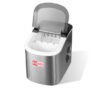
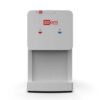
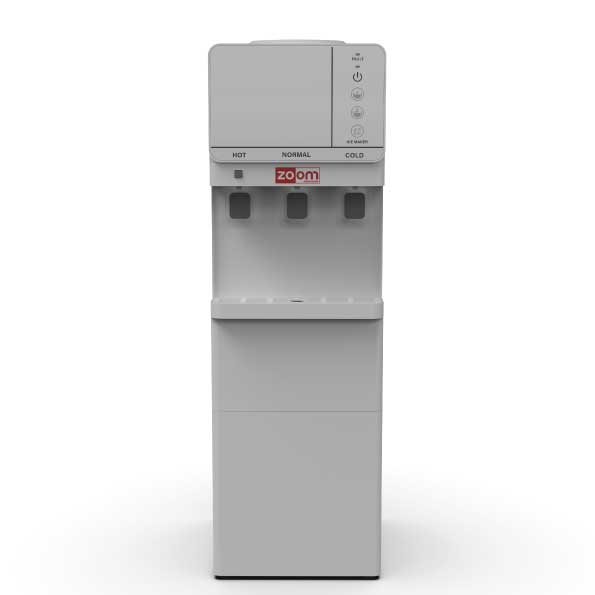
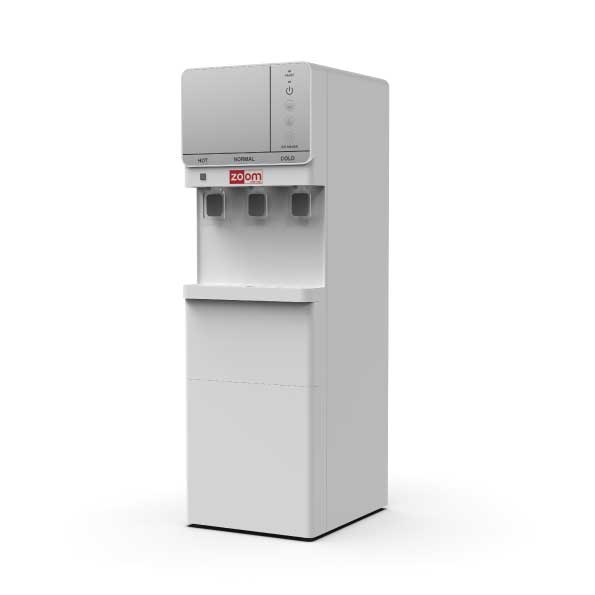
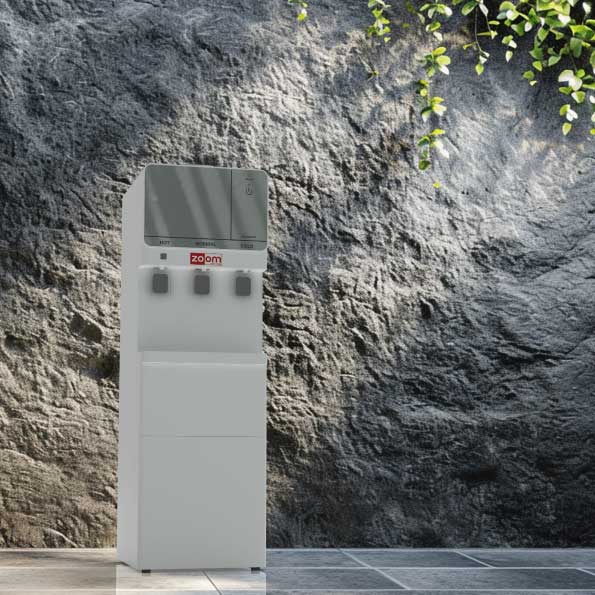
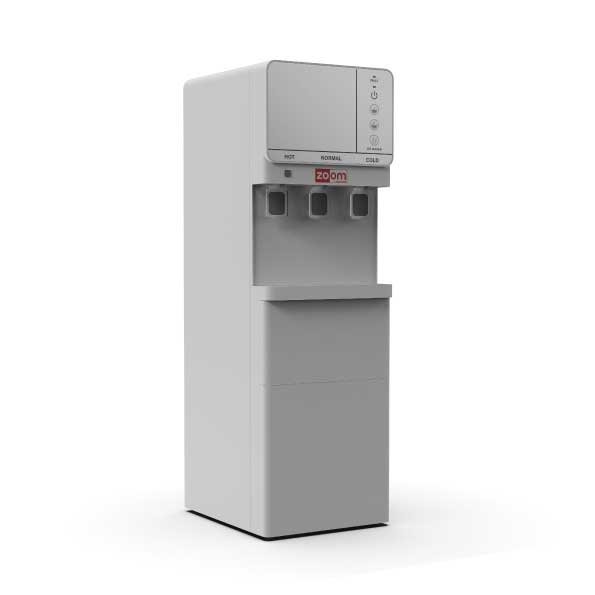


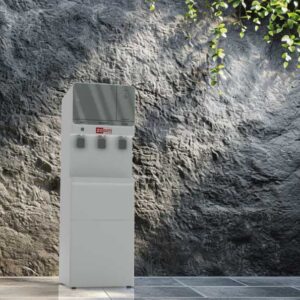
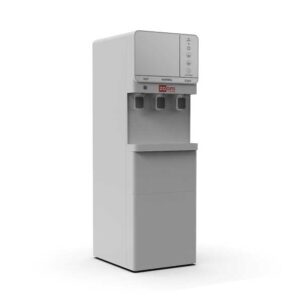
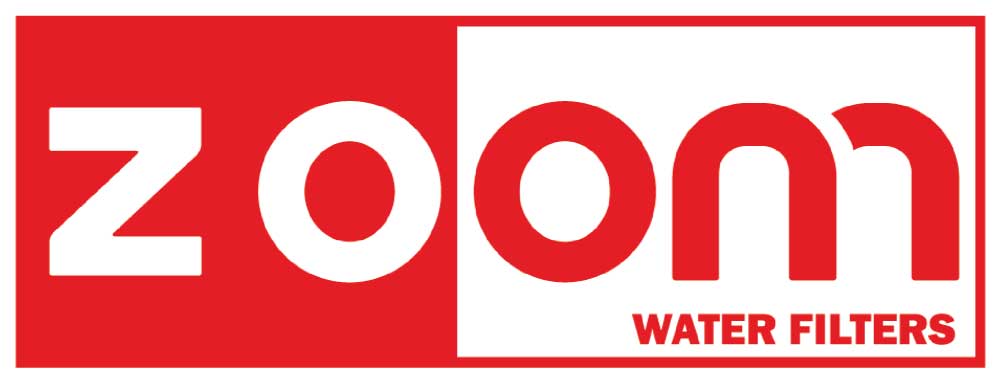


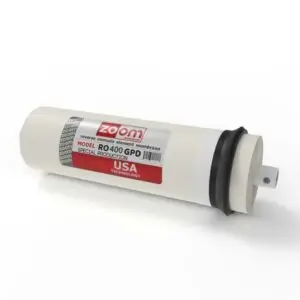
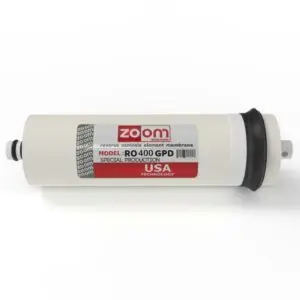


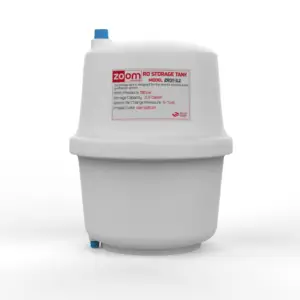
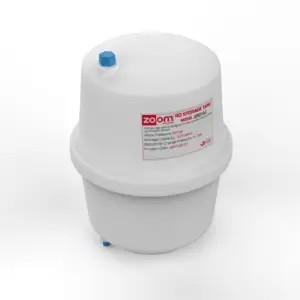
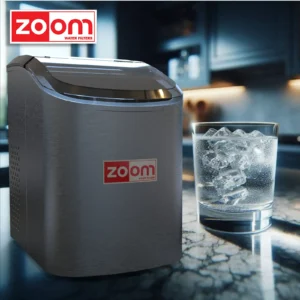
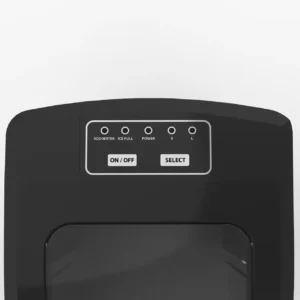
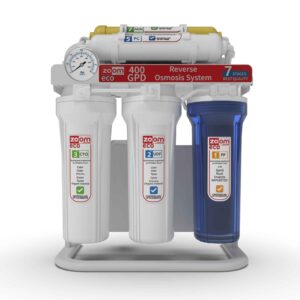
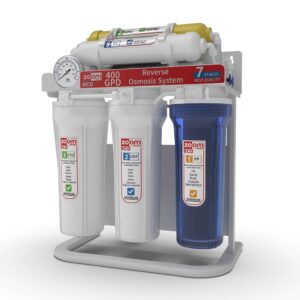
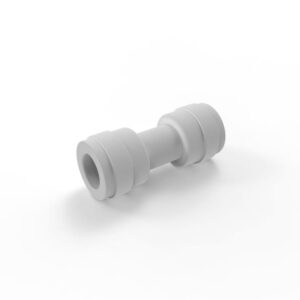
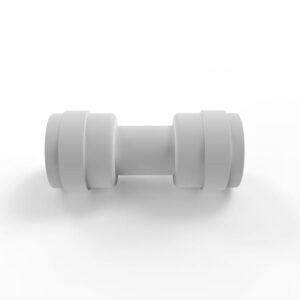
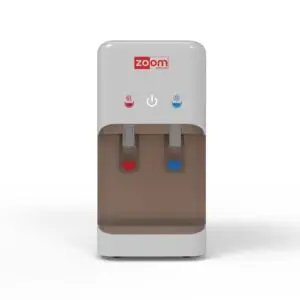
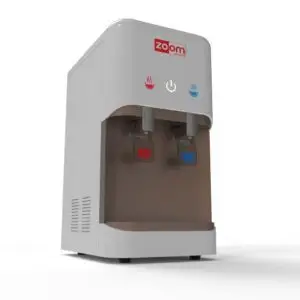
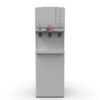
Reviews
There are no reviews yet.